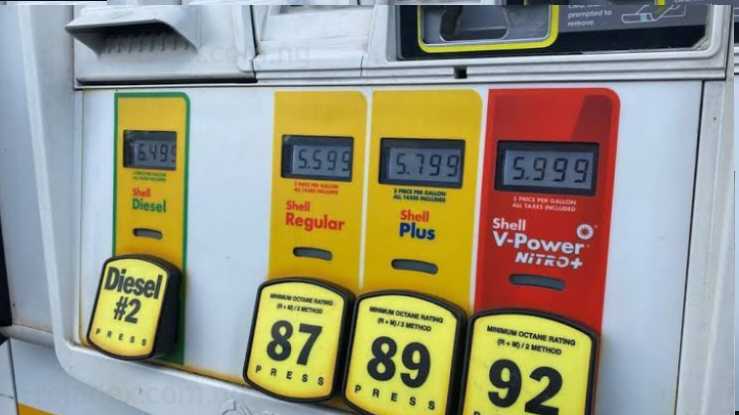Flex fuel is a term that many vehicle owners may have heard but do not fully understand. It refers to a specific type of fuel and the vehicles designed to use it. Understanding what flex fuel is, how it works, and its benefits can help consumers make informed decisions about their vehicles and fuel choices. This article will explain flex fuel in simple terms, covering how it works, its advantages and disadvantages, and the future of flex-fuel technology.
What is Flex Fuel?
Flex fuel, short for flexible fuel, is a type of fuel blend that contains gasoline and a higher percentage of ethanol. Ethanol is an alcohol-based fuel derived mainly from corn, sugarcane, and other plant materials. The most common blend of flex fuel is E85, which consists of 85% ethanol and 15% gasoline. However, the ethanol percentage can vary depending on the season and location.
A flex-fuel vehicle (FFV) is designed to run on gasoline, ethanol, or any combination of both. These vehicles have special sensors and engine modifications that adjust the fuel injection and timing based on the blend in the tank.
Basic Comparison of Regular Gasoline and Flex Fuel
| Feature | Regular Gasoline | Flex Fuel (E85) |
|---|---|---|
| Ethanol Content | Up to 10% | 51%-85% |
| Energy Content | Higher | Lower |
| Cost per Gallon | Typically Higher | Lower |
| Emissions | Higher | Lower |
| Vehicle Compatibility | Most Vehicles | Only FFVs |
How Do Flex-Fuel Vehicles Work?
Flex-fuel vehicles are designed with specialized fuel sensors, injectors, and engine control units (ECUs) that detect the ethanol content in the fuel. The system then adjusts the air-fuel mixture and ignition timing accordingly to optimize performance and efficiency.
Key Components of a Flex-Fuel Vehicle:
- Fuel Sensor: Detects ethanol concentration and sends data to the engine.
- ECU (Engine Control Unit): Adjusts engine performance based on fuel blend.
- Fuel Injectors: Designed to handle both gasoline and high-ethanol fuels.
- Corrosion-Resistant Fuel System: Ethanol absorbs water, so FFVs have parts that resist rust and damage.
Differences Between Standard and Flex-Fuel Vehicles
| Component | Standard Vehicle | Flex-Fuel Vehicle |
|---|---|---|
| Fuel Sensor | No | Yes |
| ECU Adjustment | Fixed | Variable |
| Fuel Injector Type | Standard | Ethanol-Compatible |
| Corrosion Resistance | Not Required | Required |
Advantages of Flex Fuel
There are several benefits to using flex fuel, particularly in terms of cost, environmental impact, and energy independence.
- Lower Fuel Costs
- Ethanol is often cheaper than gasoline, making E85 a more affordable option at the pump.
- Reduced Greenhouse Gas Emissions
- Ethanol burns cleaner than gasoline, producing fewer carbon emissions.
- Energy Security and Sustainability
- Since ethanol is made from renewable resources like corn and sugarcane, it reduces dependence on fossil fuels.
- Engine Performance Benefits
- Some high-performance engines benefit from ethanol’s higher octane rating, which can improve acceleration and efficiency.
Key Benefits of Flex Fuel
| Benefit | Explanation |
|---|---|
| Cost Savings | E85 is usually cheaper per gallon |
| Environmental Impact | Lower CO2 emissions than gasoline |
| Renewable Energy | Made from plant-based sources |
| Performance Boost | Higher octane improves power in some vehicles |
Disadvantages of Flex Fuel
Despite its advantages, flex fuel has some drawbacks that consumers should consider.
- Lower Fuel Economy
- Ethanol contains less energy than gasoline, meaning vehicles may require more fuel to travel the same distance.
- Limited Availability
- Not all gas stations offer E85, making it less convenient in some areas.
- Compatibility Issues
- Flex fuel can only be used in FFVs, not in standard gasoline cars.
- Potential Engine Wear
- Ethanol absorbs moisture, which may cause long-term corrosion in some engines if not properly maintained.
Key Drawbacks of Flex Fuel
| Drawback | Explanation |
|---|---|
| Lower Mileage | Ethanol has lower energy content |
| Fewer Gas Stations | Not all locations sell E85 |
| Vehicle Limitation | Only FFVs can use it |
| Moisture Absorption | Ethanol can attract water, leading to corrosion |
The Future of Flex Fuel
The development of flex-fuel technology continues to evolve, with innovations aimed at improving ethanol efficiency and vehicle adaptability. Governments worldwide are investing in biofuels as a way to reduce carbon emissions and lessen dependence on oil imports.
Key Trends to Watch:
- Higher Efficiency Ethanol Engines: New engine designs aim to offset ethanol’s lower energy content.
- More Biofuel Production: Increased production of biofuels from diverse sources like algae and waste materials.
- Infrastructure Expansion: More gas stations are expected to offer E85 as demand grows.
- Hybrid and Flex-Fuel Combinations: Some automakers are experimenting with hybrid flex-fuel vehicles to maximize fuel economy.

